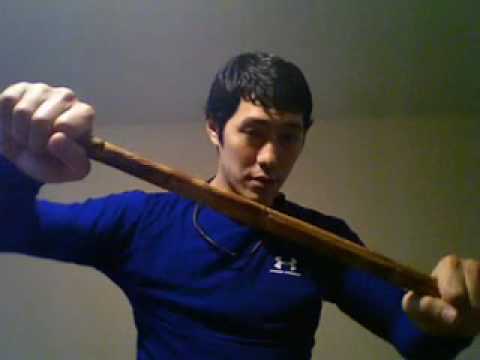10 Things taken for granted in martial arts

VIDEO: Look at these useful and awesome training exercises in Martial arts!
More recently Mixed Martial Arts has become hugely popular and the Ultimate Fighting Championship (UFC) is attracting record numbers on its Pay-Per-View events. Consequently, many young people are hoping to ride the next wave of popular martial arts. However if you want to keep your good looks, straight nose and nicely-shaped ears you might want to reconsider.
There are several downsides to not working on deceleration:
Inertia becomes your master. Once you generate momentum with a given technique, inertia comes into play. If you don’t work on deceleration, you become inertia’s slave: you can’t stop even if you want to. This has consequences, see the following bullet points.
You become vulnerable. If you can’t handle inertia, you risk getting pulled off-balance by your techniques when you throw them full power. This leaves you wide open to counters.
You become even more vulnerable. When you first fight inertia and try to get control of your techniques, you’ll lose precious time between the end of the technique and the time it takes to recover to a position where you can attack or defend again. That gives your opponent some more opportunities to counter you because you will be in between attack and defense: focused on retrieving the limb you just used.
You are slower than you need to be. Fights are measured in fractions of seconds; even a beginner can throw three attacks in one second. That means that every tenth of a second you waste fighting inertia is time you cannot use to either attack or defend. Which slows you down overall because you always need extra movements to recover in between techniques. This in turn makes you slow not because you move slow, but because you waste time doing movements that shouldn’t be necessary.
The ways in which to prepare for a big fight, whether in the competitive arena or some plain fist smacking with a local bully, are simply too numerous to count. There are preparations involving food intake and diet, preparations for strength and muscle growth, mental planning, and everything that goes in between. A successful fight requires the right preparations, done and applied at the right intervals, and in any way which works best for the fighter.
Skill building and training is definitely in the picture. Well, who fights really without training well? That’s asking for a heavy beat down and week-long injuries. Since we are talking in general about a proper fight, and non-lethal combat at that, we’ll be talking briefly about attitudes and mentality for an upcoming fight.
Any human undertaking involves mental hurdles. Even those challenges which appear to be purely physical have, as we have experienced, a whole mental dimensional to them. How can something so physical be so mental and emotional at the same time? Obviously, our minds are part of every undertaking, so what in reality are purely physical activities are actually mental challenges. In all sports, having the right mental outlook, perception, and expectations are the keys to winning. This is also true in a big fight, where physical efforts, exertion, and exhaustion take their toll on the morale, emotions, and mental fortitude of a fighter. So the mental aspect of a fight is not something to be taken for granted.
Inertia becomes your master. Once you generate momentum with a given technique, inertia comes into play. If you don’t work on deceleration, you become inertia’s slave: you can’t stop even if you want to. This has consequences, see the following bullet points.
You become vulnerable. If you can’t handle inertia, you risk getting pulled off-balance by your techniques when you throw them full power. This leaves you wide open to counters.
You become even more vulnerable. When you first fight inertia and try to get control of your techniques, you’ll lose precious time between the end of the technique and the time it takes to recover to a position where you can attack or defend again. That gives your opponent some more opportunities to counter you because you will be in between attack and defense: focused on retrieving the limb you just used.
You are slower than you need to be. Fights are measured in fractions of seconds; even a beginner can throw three attacks in one second. That means that every tenth of a second you waste fighting inertia is time you cannot use to either attack or defend. Which slows you down overall because you always need extra movements to recover in between techniques. This in turn makes you slow not because you move slow, but because you waste time doing movements that shouldn’t be necessary.





